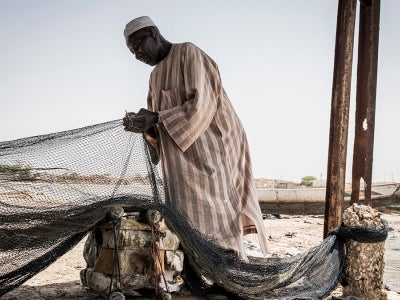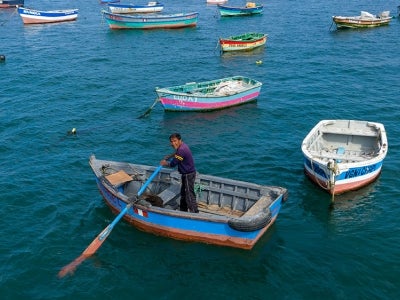
hippos_naivasha.jpg
UN Environment has been working with a broad range of partners to better assess the health of lake ecosystems in India, Kenya and the Philippines.
Economic activity in and around Lake Naivasha, and the rapidly growing population, have placed mounting environmental pressure on this important source of freshwater in central southern Kenya.
The lake provides an income for local fisherfolk, supports a vast array of flora and fauna, including waterbuck, hippos and some 350 species of water birds, and is a draw for local and international tourists. It also supports nearby flower and vegetable farms, a significant contributor to Kenya’s economy.
Its health, therefore, is vital-and the first step in preserving this ecosystem is to measure it.
Working within the Global Partnership on Nutrient Management, UN Environment organized a technical exchange in September 2018 between experts from the Philippines, India and Kenya on how best to preserve the lake’s environment and water quality. The partnership involves governments, scientists, policy-makers, the private sector, as well as non-governmental and international organizations.
The workshop set the stage for development of an Ecosystem Health Report Card, based on work undertaken in India and the Philippines as part of the Global Environment Facility-Global Nutrient Cycle Project. The Naivasha workshop marked the end of a Global Environment Facility(GEF) twinning project focusing on Lake Laguna de Bay in the Philippines and Lake Chilika in India.
Nutrient pollution loading was identified as a critical issue for all three lakes.
“The prevalence of nutrient pollution, caused largely by the overuse of fertilizers on farms, livestock runoff and untreated human wastewater releases, was identified among the most pressing pollution issues for all three lakes, but one which smart agricultural practices and improved wastewater treatment can help solve,” says UN Environment nutrient pollution expert Christopher Cox.
Scorecards have already been developed and put into use for Laguna de Bay in the Philippines and Lake Chilika in India. The scorecard has proven to be an effective, tried and tested, tool for assembling environmental health data into a coherent communication package that all audiences can relate to. The scorecards form the basis for assessment and feedback on the health of an ecosystem, including biodiversity and the effects of pollution. Through a consultation process with local stakeholders, a scorecard approach combines a robust approach with the flexibility to be adapted to the specific needs of a local lake.
The Ecosystem Health Scorecard for Lake Naivasha will provide data for communities, farmers, enterprises, and regulatory authorities in a format that can be linked to the process for reporting on the Sustainable Development Goal targets, in particular target 6.6 on water-related ecosystem health, target 6.3 on water quality including wastewater, and 6.5 which promoted cross-sectoral frameworks through integrated water resources management.
These are supported by cross-sectoral frameworks by UN Environment’s Framework for Freshwater Ecosystem Management, which uses principles of the 2030 Agenda to assist countries in protecting and restoring their water-related ecosystems.
“The scorecard approach uses a traffic light dashboard system to show whether a lake is `healthy’ or not, based on parameters that are important to local communities-like bird and fish counts, and water pollution,” says Lis Mullin Bernhardt, in UN Environment’s Freshwater Ecosystems Unit. “It can be applicable to any lake and ecosystem in the world and helps to highlight the role of nature and ecosystem services.”
Lake Naivasha and other water bodies are of critical importance for people and our planet. World Wetlands Day on 2 February each year is dedicated to raising global awareness about the vital role of wetlands for people and our planet.
UN Environment, through its Global Programme of Action for the Protection of the Marine Environment from Land-based Activities, in collaboration with its Freshwater Ecosystems Unit, have been facilitating the implementation of initiatives and exchange of best practices through its programme of work. In December 2017 UN Member States mandated UN Environment in a comprehensive Resolution to help implement a Framework for Freshwater Ecosystem Management to help countries protect and restore their water-related ecosystems in line with the 2030 Agenda, including through addressing water pollution.
For further information please contact Chris Cox.
The story was originally published by UN Environment.


